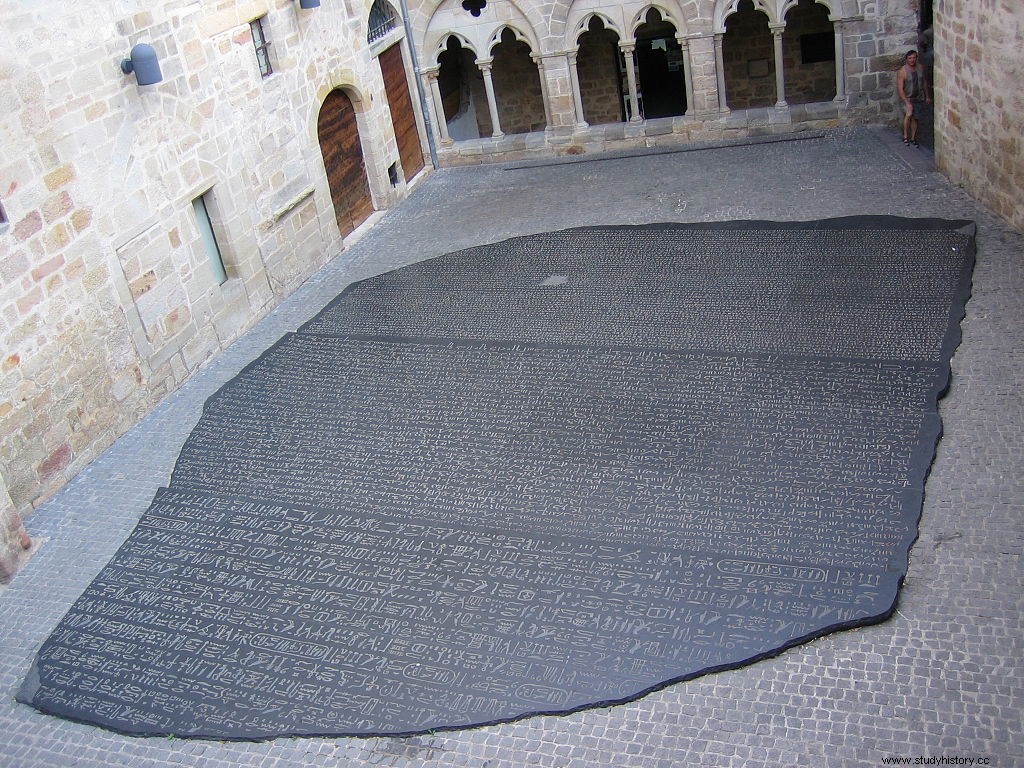The French Revolution has just swept away everything in its path. After the chaos caused by the Terror, the Directory established its power in a collegial manner in order to avoid the dictatorship of a single man. However, it is this same government that will reveal a man, and only one:Napoleon. All crowned with his victories in Italy, this one, in search of military glory, mounts an expedition in Egypt. The Directory, delighted to remove this imposing general, supports him. This Egyptian campaign (1798-1801), largely rewritten to serve the glory of Bonaparte, reveals to the eyes of the world the treasures of Antiquity and this mysterious land, too long forgotten. During this expedition, a stone found at Rosette by Lieutenant Bouchard in 1799 bears strange ancient inscriptions:hieroglyphics. Champollion (1790-1832), born at this time, was therefore very early initiated by his brother Jacques-Joseph, keen on archeology and who worked on the Description of Egypt , a collection of notes taken during the expedition.
1821-1822

Characters
Jean-François Champollion
Procedure
Jean-François Champollion undertakes very young to decipher these famous hieroglyphs. Facsimiles of the Rosetta Stone circulate among Egyptophiles. The version he has, by the way, is of poor quality. In 1814, he wrote to the president of the Royal Society of London to compare it to the original, kept in the British Museum. In 1821, he managed to decipher the name of Ptolemy V on the famous black stone brought back from the expedition. Then, on the obelisk of Philae, he deciphered the name of Cleopatra.
On September 14, 1822, he deciphered the hieroglyphic code. He realizes that these are based as much on a system of ideograms (sign representing an idea) as on a phonetic system. Upset, he suffered an attack, fortunately benign. A week later, he presented his first works to the Académie des Belles-Lettres. Two years later, he established a precise system for translating hieroglyphs. He writes a comparative table between phonetic hieroglyphic characters with those in Coptic and Demotic. Then, he went to Italy to find pieces from the Napoleonic expedition to confirm his system. In 1826, he was appointed curator of the Louvre Museum in the Department of Ancient Egypt. Two years later, he finally set foot on the land of the Pharaohs and confronted his theoretical system with reality! Returning from his eighteen months of travel, he obtained the first chair dedicated to ancient Egypt at the Collège de France. He writes a grammar and a dictionary concerning the ancient Egyptian language.
Consequences
The transcription of hieroglyphs by Champollion made it possible to pierce many secrets inscribed on the land of the Pharaohs. He thus founded on the threshold of his life a new science, Egyptology, which will allow historians to discover the History of the Egyptians which until then had escaped them.
